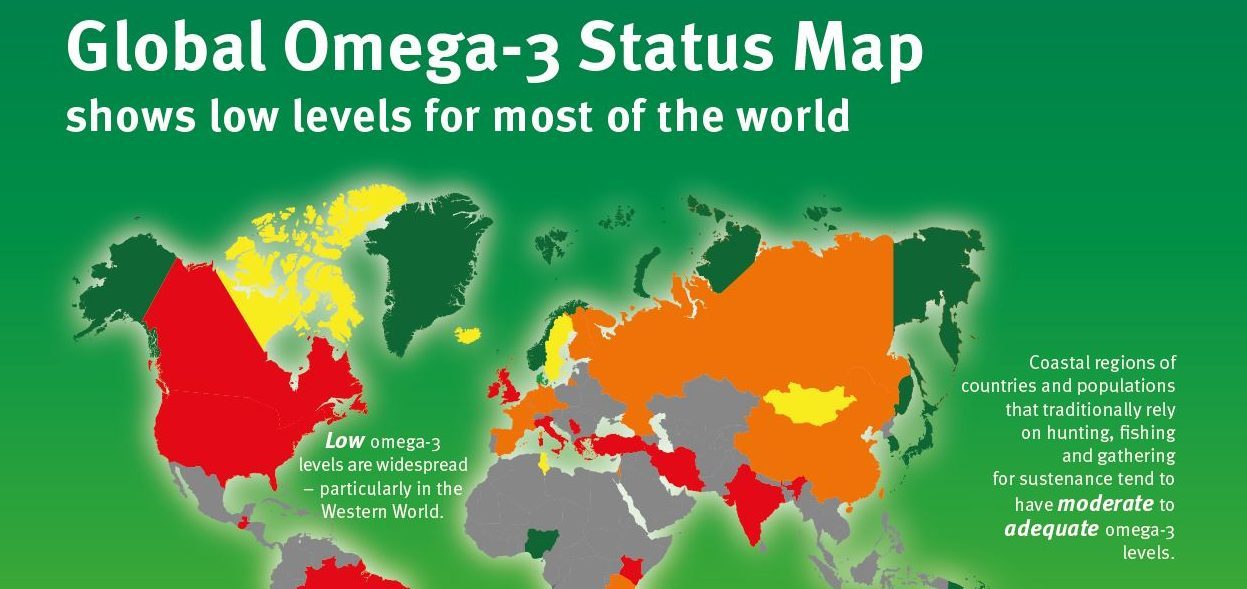A global survey of the levels omega-3 polyunsaturated fatty acids (PUFA) – particularly docosahexaenoic acid (DHA) and eicosapentaenoic acid (EPA) – present in the blood stream of healthy adults has revealed worryingly low levels in most regions.
The paper, co-authored by DSM Nutritional Products and published in Progress in Lipid Research, analyzed 298 studies to create a global map indicating levels of EPA and DHA and identifying which regions are more at risk of chronic illness.
Very low blood levels (≤4%) of DHA and EPA were observed in North America, Central and South America, Europe, the Middle East, Southeast Asia and Africa.
The Sea of Japan, Scandinavia and regions with indigenous populations or populations who have not adopted Westernized food habits were classified as having high status of EPA and DHA (>8%).
Dr Manfred Eggersdorfer, senior VP, Nutrition Science and Advocacy at DSM and Professor of Healthy Ageing at the University Medical Centre Groningen, commented: “PUFAs, and EPA and DHA in particular, have long been associated with decreased risk of cardiovascular mortality and cognitive decline. The conclusions of this paper highlight that a significant proportion of the population are at increased risk of chronic disease due to low omega-3 PUFA status.”
“In the past we have been limited by the absence of the comprehensive analysis of data that is now available to us. By developing the global map, we can better understand the current levels of omega-3 PUFAs in the blood of healthy adults worldwide. The findings can then be used when developing both national and global guidelines regarding omega-3 intake,” elaborates co-author of the study, Dr Norman Salem, Jr, Senior Science Fellow, Nutritional Lipids at DSM. “New recommendations will not only give the general population guidance on adequate PUFA intake, but also highlight the risks of low levels of bloodstream EPA and DHA.”











